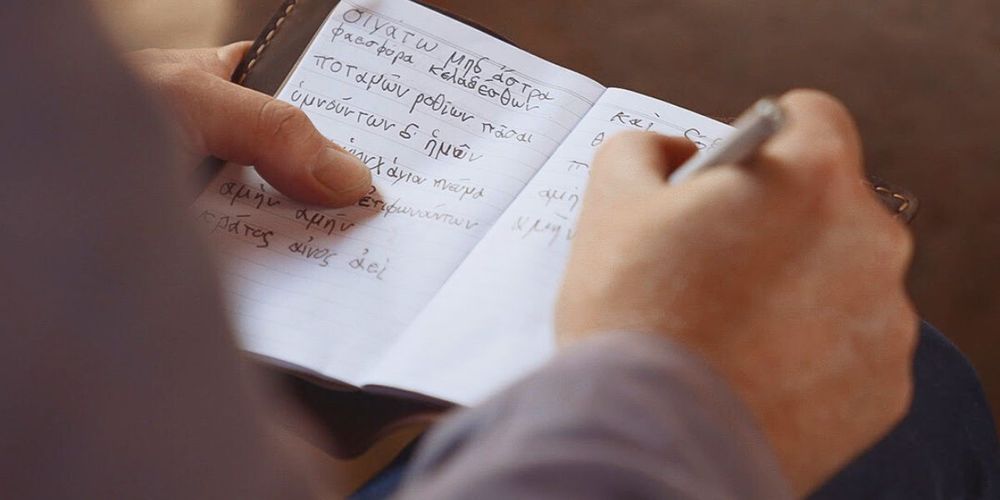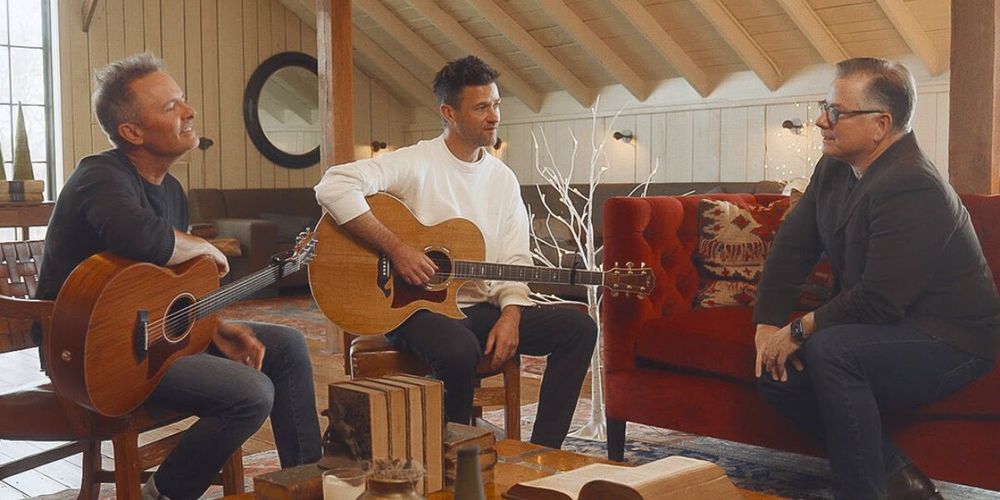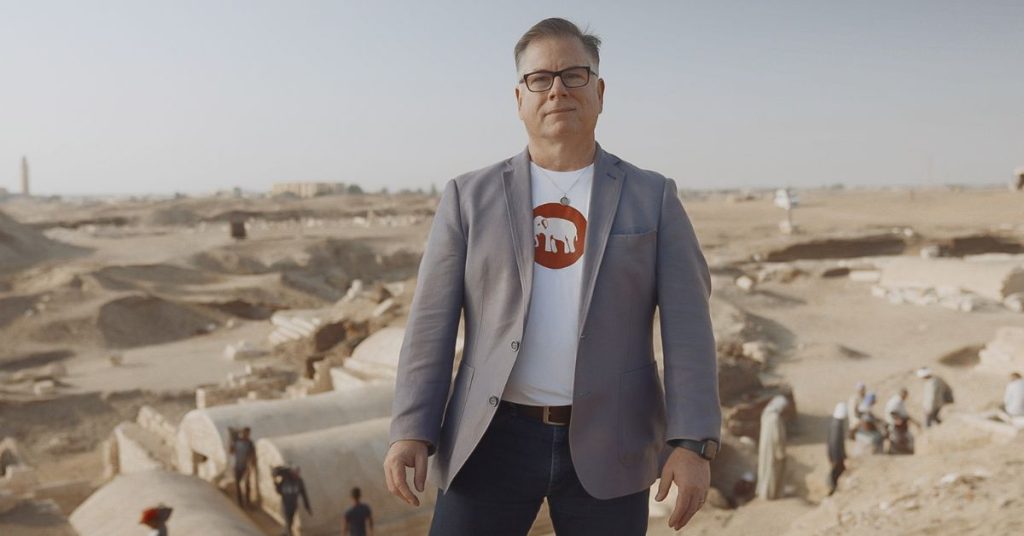By: Clare Bruce
A new single from worship artists Chris Tomlin and Ben Fielding, released Friday, April 11, breathes new life into the oldest Christian hymn ever put down on paper—actually, make that papyrus.
Simply titled The First Hymn, the single was recorded by Tomlin and Fielding at the request of historian Professor John Dickson, who translated the lyrics of the ancient worship song from the original Greek. The song is the subject of a soon-to-be released documentary.
The 3rdCentury lyrics of The First Hymn were found on a papyrus known as ‘P.Oxy 1786’, first unearthed in 1918 in the Egyptian city of Oxyrhynchus—in an ancient rubbish dump. It was part of a haul of half a million fragments of papyrus, widely considered the most important discovery in the study of ancient history. Among those papers are about one third of the world’s earliest known fragments of the New Testament.
The paper holding the old hymn is a mere 30 centimetres by 5 centimetres in size. It is the oldest Christian hymn ever to be found complete with both lyrics and musical notation.
Prof Dickson, who translated the lyrics, is currently the Jean Kvamme Distinguished Professor of Biblical Studies and Public Christianity, based at Wheaton College in Illinois, USA. He also hosts the Undeceptions podcast.
‘Let All Be Silent’

The ancient papyrus carries these moving lyrics:
Let all be silent:
The shining stars not sound forth
All rushing rivers stilled,
As we sing our hymn
To the Father, Son, and Holy Spirit
As all Powers cry out in answer,
Amen. Amen.
Might, praise, and glory forever
To God, the only Giver of all good gifts.
Amen. Amen.
In the process of translating, Prof Dickson also researched the musical notation that accompanied the lyrics. He says it’s similar to the type of music scholars know was being used in taverns and on stage in pagan theatres at the time. In other words, it was in the style of ancient pop music.
“The musical style isn’t anything like later church music,” said Dickson. “It’s written in pop style (for ancient Greek-speaking Romans). It’s designed to capture the ears of a wide audience, and draw that audience into a message that also seems deliberately constructed to move people away from local deities, to the – as Christians saw it – one true Lord of the universe.
“That one true Lord, as the hymn proclaims, isn’t Zeus or any of the other pagan gods, but the Father, Son, and Holy Spirit. The only Giver of All Good Gifts.”
An Ancient Sound Becomes Modern

The new song by Tomlin and Fielding uses those ancient lyrics, as well as hints of the original tune. Its aim is to give this very early piece of Christian culture back to today’s church, to form part of the modern worship canon.
“To give back to the church a song that hasn’t been sung for nearly 2000 years just seemed irresistible,” said Dickson. “To stand in the footsteps of early Christians and witness the enduring power of their words is humbling.
“For me the First Hymn represents Christianity before there were denominations. It’s a point of unity. It demonstrates that from the very beginning, Christianity revolved around the Triune God, the Father, Son, and Holy Spirit.
“It’s also testament to the confidence of the ancient Church right in the middle of their period of persecution. At times they were being hunted down, but here they were singing with joy and exuberance about ‘the only Giver of all good gifts’.
“How amazing to be able to stand together with those ancient believers and sing the same words, today.”
Ben Fielding echoed those sentiments: “I couldn’t be more excited to hear congregations sing this song. Our hope is to give back to the modern church the very hymn that echoed through the halls of the early church. That we can still sing today those same words written 1800 years ago, in unity, is a profound gift.”
Watch the Trailer:
Chris Tomlin reflected on how the early believers gave their lives for their faith, and by singing their song, today’s Christians could stand alongside them.
“This song reminds us of the history of our faith,” he said. “It’s not a trend, it’s not a fad… it’s ancient, it’s historical, and it’s eternal. The worship of the one true God—the giver of all good gifts—has echoed through generations.”
This is not the first time John Dickson has inspired the writing of a modern worship song from ancient themes. In 2014, he put out a call on Twitter asking Hillsong Church’s musicians to write something using the lyrics of the Apostle’s Creed, written between the 4th and 6th centuries. They accepted the challenge, and the result was the highly popular worship tune, This I Believe – also penned by Ben Fielding, as well as Matt Crocker and Francesco Lorenzi, and sung in churches around the world.
Documentary Coming to Cinemas in July

The feature-length documentary, The First Hymn, is produced by Undeceptions, and hosted by Dickson. It takes viewers from the song’s desert origins in the sands of an ancient Egyptian city, to its modern resurrection, culminating in a live concert performance.
The doco will premiere on Monday, April 14 at Biola University in California, and at the Museum of the Bible in Washington DC on April 15, with a special performance by Chris Tomlin and Ben Fielding.
It will be available to watch in Australian cinemas in July, and streaming online from August 2025.
Dive Deeper
- Hear the song: https://christomlin.lnk.to/firsthymn
- Website: Learn more about the documentary at thefirsthymnmovie.com
- Podcast Part 1: John and his team make incredible discoveries about early church music, shedding light on what the earliest Christians believed. Listen
- Podcast Part 2: Behind the scenes – How Ben Fielding and Chris Tomlin resurrected the First Hymn and made it ours. Hear raw clips of early versions. Listen
Article supplied with thanks to Christian Media & Arts Australia.
Feature image: Collaborators (L-R) Ben Fielding, Professor John Dickson and Chris Tomlin.
